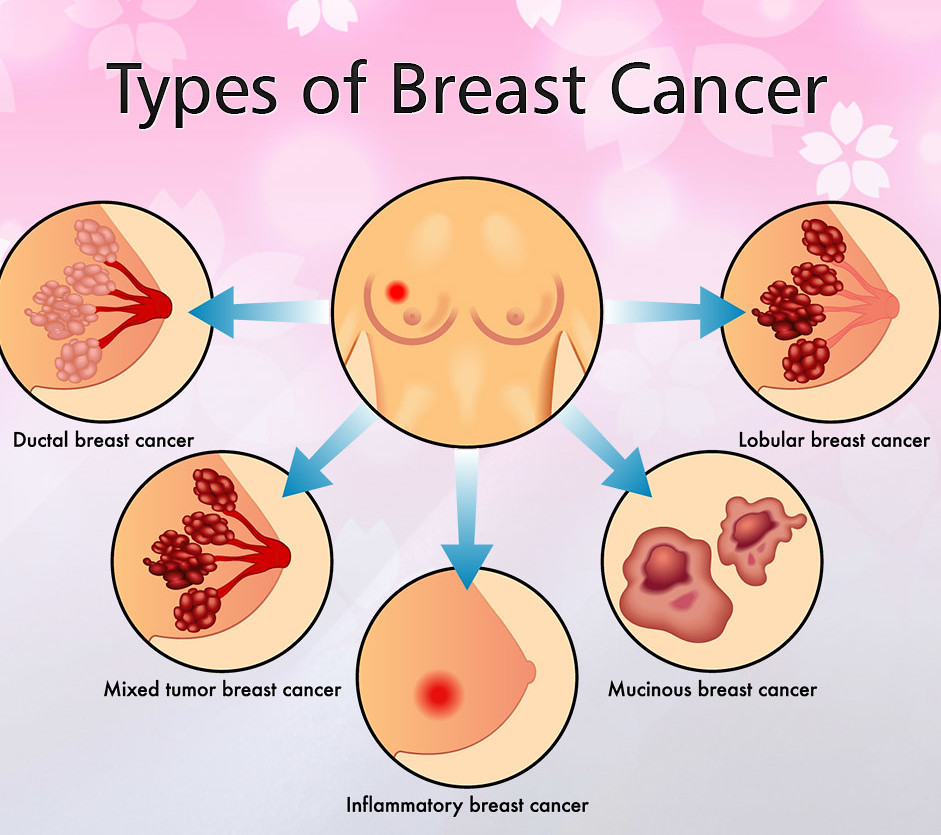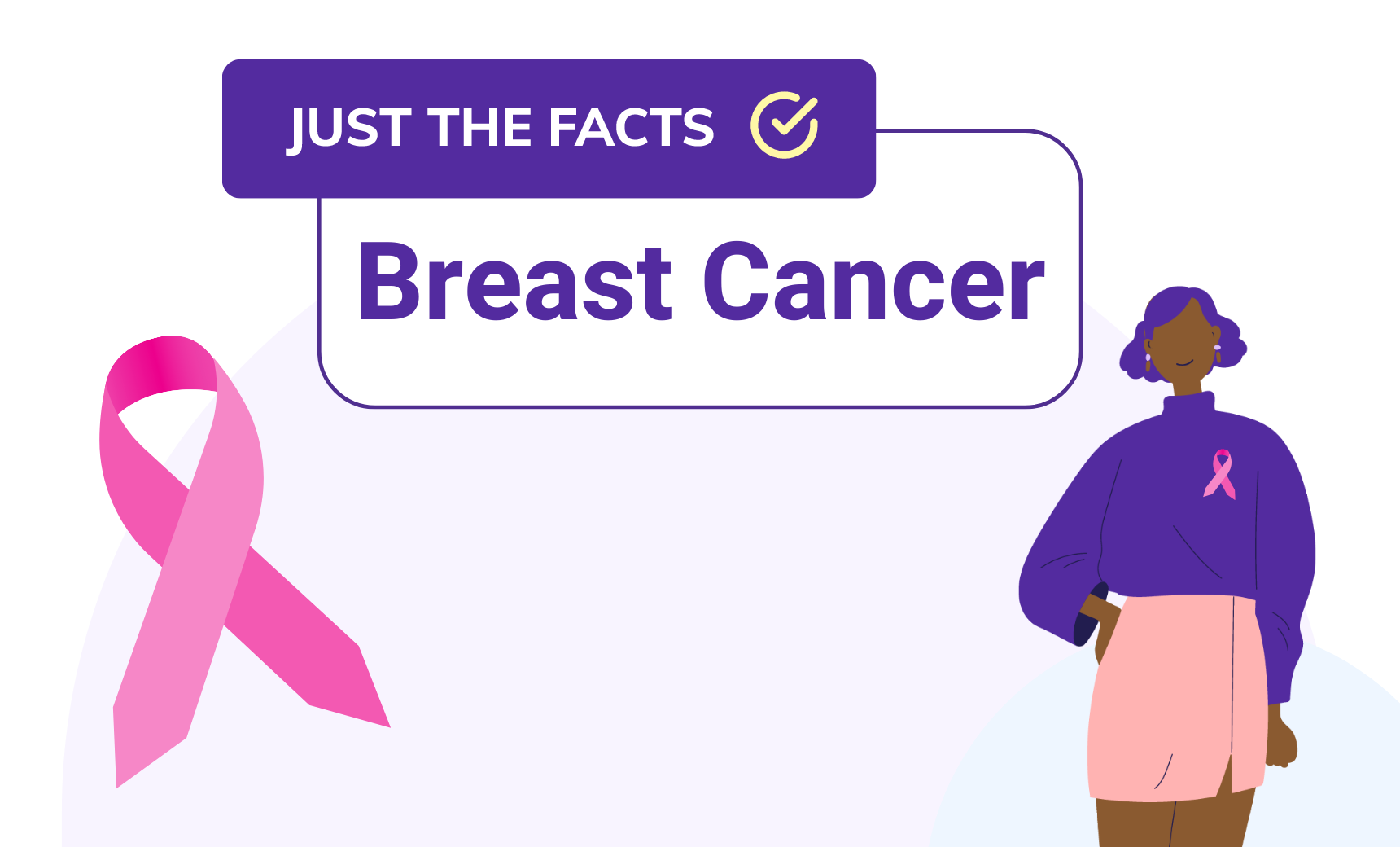
Types of Breast Cancer
In this blog piece, we’d like to focus attention on breast cancer. Considering that October is Breast Cancer awareness month, it’s essential to know what breast cancer is, how it’s diagnosed, how it’s treated, and understanding the different types.
According to the CDC, Breast cancer is the number one fastest-growing cancer and the second most common cause of death from cancer among women in the United States (not including skin cancer).
What is Breast Cancer?
Generally speaking, cancer is a condition where normal cells fail to stop dividing and grow uncontrollably. Our DNA has a gene that “stops” cellular growth and a DNA repair gene, preventing cancer called “Tumor Suppressor Genes.” When Tumor suppressor genes are inhibited, defected, or mutated is when cancer is likely to occur. For each organ, there are tumor suppressor genes that correspond with it. In breast cancer, the tumor suppressor genes that are associated are called BRCA1 + 2.
Other oncogenes are associated with breast cancer, such as ErbB2, MYC, PIK3CA, and other tumor suppressors like TP53, RB1, and PTEN.
What Are The Types of Breast Cancer?
There are several different types of breast cancer which include:
Ductal Carcinoma In-Situ (DCIS) – Is non-invasive where cancer does not spread past the lining of the breast ducts. (in situ means “in the original place.”)
Invasive Ductal Carcinoma (IDC) – Like DCIS, but cancer has spread beyond the ductal lining.
Triple-Negative Breast Cancer (TBNC) – This means that the breast cancer cells have tested negative for hormone epidermal growth factor receptor 2 (HER-2), estrogen receptors (ER), and progesterone receptors (PR).
Inflammatory Breast Cancer – is aggressive and fast-growing in nature, where cancer cells infiltrate the skin and lymph vessels of the breast without producing a typical lump. At the time when lymph nodes become blocked is when symptoms usually occur.
Initial presenting symptoms begin with a mild rash similar to an insect bite. The breast typically becomes red, swollen, and warm with dilation of the breast skin’s pores. The skin may appear pitted like an orange peel, and nipple changes such as inversion, flattening, or dimpling may also occur.
Metastatic Breast Cancer – Is also known as stage 4. Cancer has broken through the basement membrane of tissues and spreads to other parts of the body like the lungs, liver, brain, and bones. Symptoms present differently depending on their location.
How is Breast Cancer Diagnosed?
The diagnosis of breast cancer typically begins with an at-home self-exam. If a lump is detected and breast cancer is suspected, then a physical exam from a physician is the next step. If your doctor suspects breast cancer, they will send out for a mammogram.
A Mammogram is a machine that uses X-Ray technology to visualize breast tissue. Depending on your history, clinical finding, and presenting illness, your doctor may suggest you follow up with a tissue biopsy. The tissue sample will be sent to a lab for pathological analysis to properly diagnose and stage cancer.
Routine mammograms will be a part of clinical work up to monitor the progress of cancer. LabFinder offers diagnostic and screening mammograms online if you have concerns about breast cancer.
How are Mammograms interpreted?
Radiologists use a particular system to classify mammography results, which is called a BI-RADS score. The scores range from 0 to 5, meaning:
0—More information is needed, and may need another mammogram before a score can be given.
1—Nothing abnormal is seen and should continue routine screening.
2—Benign conditions, such as cysts, are seen, and routine screening should be continued.
3—Something is seen that probably is not cancer and must repeat a mammogram within 6 months.
4—Something is seen that is suspicious for cancer and may need to have a biopsy.
5—Something is seen that is highly suggestive of cancer and will require a biopsy.
How is Breast Cancer Treated?
The way breast cancer is treated is dependent on the staging and grading of the tumor. However, the most appropriate treatment methods include surgery, radiation, hormone therapy, chemotherapy, and targeted therapies. Types of surgery include lumpectomy, mastectomy, lymph node resection & lymphedema, and breast reconstruction.
Chemotherapy – is a combination of drugs that slows the growth of cells. It can be given either in oral or IV format. Severe side effects include nausea, vomiting, hair loss, fatigue, and loss of appetite. The reason being is because the medication affects health in addition to cancer cells.
Radiation – uses high energy rays to kill cancer cells in a targeted area. Usually used after surgery to kill cancer regrowth and can be used in combination with chemotherapy for advanced stages.
Hormone Therapy – Estrogen and Progesterone can cause aid in cancer growth. Hormone therapy causes a decrease in cellular uptake of hormones to inhibit growth.
Targeted Therapy – uses targeted hormone receptors such as HER-2 to target cancer growth. Monoclonal antibody medications like Herceptin (Trastuzumab) target HER2-positive tumors. Suppose cancer cells are positive for these receptors. In that case, that means there is an overabundance in the cancer cell for the growth-stimulating for the HER2 protein. This form of Therapy has much less severe side effects than chemotherapy and radiation therapy.
Physical Activity, Wellness & Nutrition – It’s vital to maintain adequate nutrition and well-held health during cancer treatment. As useful as medications are, it’s crucial to tailor treatment therapies in conjunction with proper nutrition, physical, mental, and emotional health.
Wellhaus is an online nutrition platform that helps prioritize and incorporates appropriate nutrition into your daily life. Leah Silberman is a registered dietitian that specializes in lifestyle and dietary modifications. Click here to learn more.
If you or a loved one suspects Breast Cancer, please book a screening Mammogram with LabFinder by clicking here. LabFinder offers various medical tests with a secure patient portal that seamlessly integrates results from any lab or radiology imaging center in our system.
(All videos are courtesy of The National Breast Cancer Foundation)




Andy Alem
The LabFinder Editorial Team is behind The Illuminator and The Insider, LabFinder’s consumer and business blogs.
Dr.Robert Segal
Dr. Segal is CEO and co-founder of LabFinder, as well as a board-certified cardiologist. He began practicing medicine in 2002 and has founded several businesses, including Medical Offices of Manhattan and Manhattan Cardiology.